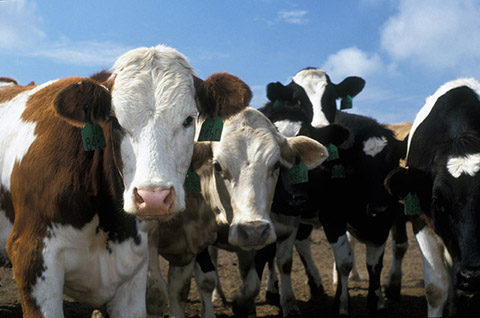
From the University of Missouri
In recent years, a number of cattle handlers have been attacked by a cow or bull, says Eldon Cole, University of Missouri Extension livestock specialist. Although the majority of the attacks didn’t result in fatalities, there have been many bruises, broken bones and crushed egos.
Statistics support the fact that farming is one of the most dangerous occupations. According to Amanda Marney, University of Missouri Extension ag preparedness specialist, national data show livestock, machinery and falls as the dominant sources of occupational injury on farms.
“In fact, some studies show that up to one-third of injuries on the farm are associated with livestock,” Marney says. “While many cattle are placid, they weigh more than six times the weight of a man and can crush bones with a single kick, step or charge.”
In a study released by the Centers for Disease Control and Prevention (CDC), there were 21 cattle-related deaths in Missouri, Iowa, Kansas and Nebraska from 2003 to 2008. Of these deaths, 13 involved attacks by individual bulls, six involved attacks by individual cows and five involved multiple cattle.
According to Cole, the attacks reported to him have resulted from animals that had never acted aggressive toward their owners before. “Some may even have been show animals that were broke to load or otherwise were very docile,” Cole says.
“Don’t assume an animal that’s halter broken or that you’ve petted out in the pasture won’t have a bad day and their hormones take over. When this occurs, bulls or cows can surprise you at how fast they move,” Cole says. “Your big beef or dairy bull may not be as fast but they will be quicker than you expect.”
Cole offers several tips to help avoid such injuries:
Always be careful around livestock and have an escape route planned such as going under or over a fence or through a man pass.
Always carry some device that offers some protection in case of attack. Though dogs can provoke an animal, they can also sometimes help the owner escape.
Remember, you’re not getting any younger, and may not move as quickly as you once did. Always try to have another person with you when working with newborns or moving bulls.
Cull aggressive animals. Docility is a heritable trait; if some animals in your herd are inherently mean, pay more attention to that trait in selecting replacements. Some breed associations offer docility EPDs.
Don’t sacrifice safety for speed; “easy does it” is a good policy around livestock.
Keep fences and gates in good repair and sturdy enough to protect you and your help.
— University of Missouri release In recent years, a number of cattle handlers have been attacked by a cow or bull, says Eldon Cole, University of Missouri Extension livestock specialist. Although the majority of the attacks didn’t result in fatalities, there have been many bruises, broken bones and crushed egos.
Statistics support the fact that farming is one of the most dangerous occupations. According to Amanda Marney, University of Missouri Extension ag preparedness specialist, national data show livestock, machinery and falls as the dominant sources of occupational injury on farms.
“In fact, some studies show that up to one-third of injuries on the farm are associated with livestock,” Marney says. “While many cattle are placid, they weigh more than six times the weight of a man and can crush bones with a single kick, step or charge.”
In a study released by the Centers for Disease Control and Prevention (CDC), there were 21 cattle-related deaths in Missouri, Iowa, Kansas and Nebraska from 2003 to 2008. Of these deaths, 13 involved attacks by individual bulls, six involved attacks by individual cows and five involved multiple cattle.
According to Cole, the attacks reported to him have resulted from animals that had never acted aggressive toward their owners before. “Some may even have been show animals that were broke to load or otherwise were very docile,” Cole says.
“Don’t assume an animal that’s halter broken or that you’ve petted out in the pasture won’t have a bad day and their hormones take over. When this occurs, bulls or cows can surprise you at how fast they move,” Cole says. “Your big beef or dairy bull may not be as fast but they will be quicker than you expect.”
Cole offers several tips to help avoid such injuries:
Always be careful around livestock and have an escape route planned such as going under or over a fence or through a man pass.
Always carry some device that offers some protection in case of attack. Though dogs can provoke an animal, they can also sometimes help the owner escape.
Remember, you’re not getting any younger, and may not move as quickly as you once did. Always try to have another person with you when working with newborns or moving bulls.
Cull aggressive animals. Docility is a heritable trait; if some animals in your herd are inherently mean, pay more attention to that trait in selecting replacements. Some breed associations offer docility EPDs.
Don’t sacrifice safety for speed; “easy does it” is a good policy around livestock.
Keep fences and gates in good repair and sturdy enough to protect you and your help.
